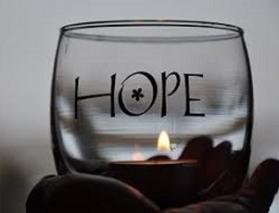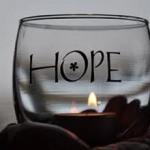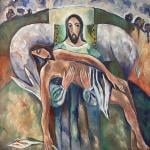There are these two young fish swimming along and they happen to meet an older fish swimming the other way, who nods at them and says “Morning, boys. How’s the water?” The two young fish swim on for a bit; eventually one of them looks over at the other and goes “What the hell is water?”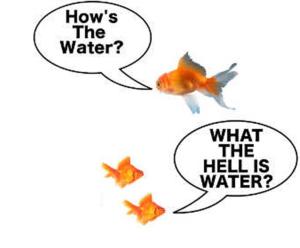
David Foster Wallace opened his 2005 commencement address at Kenyon College with this amusing parable, using it to set up some reflections on how, as Henry David Thoreau once said, to avoid arriving at the end of your life and coming to the realization that you have not lived. I was reminded of the story when Rabbi Steve Leder used it leading to a different interpretation when he was the guest on a recent episode of Kate Bowler’s podcast “Everything Happens.”
The rabbi quotes Marshall McLuhan who once said, “I don’t know who discovered water, but it wasn’t the fish.” Slightly more critical than David Foster Wallace, Leder notes that “the fish is the idiot that doesn’t know it’s in water,” then brings the point home by pointing out that we are the fish. A fish first learns what water is when it is jerked by a hook in its mouth tied to a fishing line out of the water, gasping for air. Similarly,
it is only pain and disruption that can do that for us. . . Disruption is the only thing that teaches us anything. Pain is the only teacher. Death is the only teacher. And is it worth it? No. Is it worthless? No.
So far the “what is water?” parable leads both to consideration of staying focused on what is important in one’s life and the teaching power of pain and suffering. There’s at least one more way in which the story can be read, a lesson that is particularly important to consider during Easter season. Jesus’ resurrection is both central to Christian faith and a miracle if one defines a “miracle” as something that is contrary to the laws of nature. But I’ve come to suspect over the years that miracles are hidden in plain sight, just as water is for the fish. Seeing them requires a different sort of awareness and attention.
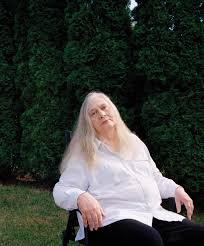 A recent rereading of Marilynne Robinson’s beautiful novel Gilead reminded me of a fruitful space concerning miracles, a space that I’ve learned to occupy more and more over the past several years. In Gilead, a rural Congregational minister in his late seventies is writing a memoir for his young son, an only child unexpectedly born to Rev. Ames and his much-younger wife Lila when Ames is seventy.
A recent rereading of Marilynne Robinson’s beautiful novel Gilead reminded me of a fruitful space concerning miracles, a space that I’ve learned to occupy more and more over the past several years. In Gilead, a rural Congregational minister in his late seventies is writing a memoir for his young son, an only child unexpectedly born to Rev. Ames and his much-younger wife Lila when Ames is seventy.
Ames expects to die long before the boy is grown, and Gilead is his love letter to his son containing as much guidance and wisdom as Ames can muster. One of Ames’ greatest continuing insights concerns the sacredness of all things. As he nears the end of his life, he pays close attention to the mystery and miracle of things most of us dismiss as “ordinary.” Toward the end of the novel, Ames writes:
It has seemed to me sometimes as though the Lord breathes on this poor gray ember of Creation and it turns to radiance–for a moment or a year or the span of a life. And then it sinks back into itself again, and to look at it no one would know it had anything to do with fire, or light. . . . But the Lord is more constant and far more extravagant than we think. Wherever you turn your eyes the world can shine like transfiguration. You don’t have to bring a thing to it except a little willingness to see. Only, who has the courage to see it?
Good question. It takes a lot more courage to embrace this world with all of its imperfections and disappointments as a spectacular and continuing divine miracle than to step back and bemoan the fact that it seldom is the miracle we would have performed had it been up to us. It isn’t up to us—the power and glory of our created, sacred world is far above our pay scale.
The older I get, the more inclined I am to look for intimations of the divine in places both unusual and mundane. Sometimes favor seems to drop into the day as light as a feather and as ephemeral as a wisp of smoke, while at other times transcendence invades the everyday in ways that only the most deliberately blind could miss. Jeanne and I call such events “Big Bird moments” and have come to expect them as a normal part of our lives.
Then there are other reminders that we are not alone and that this is not all there is which, instead of dropping in from outside, arise from within our deepest selves. In one of her many insightful essays, Marilynne Robinson refers to these as moments when we discover that “we are more than we are,” moments she describes as follows:
By this I mean to suggest the feeling all of us have who try something difficult and find that, for a moment or two perhaps, we succeed beyond our aspirations. The character on the page speaks in her own voice, goes her own way. The paintbrush takes life in the painter’s hand, the violin plays itself. There is no answer to the inevitable questions: Where did that idea come from? How did you get that effect? Again, particulars are lacking. We have no language to describe the sense of a second order of reality that comes with these assertions of higher insights and will override even very settled intentions, when we are fortunate.
In my own life, these moments occur most often in the classroom; I have also experienced such moments on the organ or piano bench. When I walk out of a classroom thinking “Whoa! Where did that come from?” I am realizing that I am more than I am, and I had nothing to do with it. When I am able to improvise a bridge between the penultimate and final verse of a hymn on the fly that is far better than I could have come up with if I had thought about it, I have the “sense of a second order of reality” that Robinson is talking about. Sure, it could be luck, chance, a confluence of unknown events, or Scrooge’s blob of undigested cheese. But I choose to consider such moments as “thin places” where the membrane between the here and now and what is greater than us becomes so porous as to almost disappear.
Such moments cannot be planned, nor can they be manufactured. But they can be witnessed rather than ignored. Recognizing them requires a shift in attitude and focus that needs to be cultivated—it’s something I’ve been working on, with mixed success, for the past several years. We are surrounded by moments of pure grace, moments when, as Anne Lamott writes, “suddenly you’re in a different universe from the one where you were stuck, and there was absolutely no way for you get there on your own.” We are surrounded by such moments if we only have the eyes to see them. Just as fish swimming in water, we are immersed in the miraculous.




